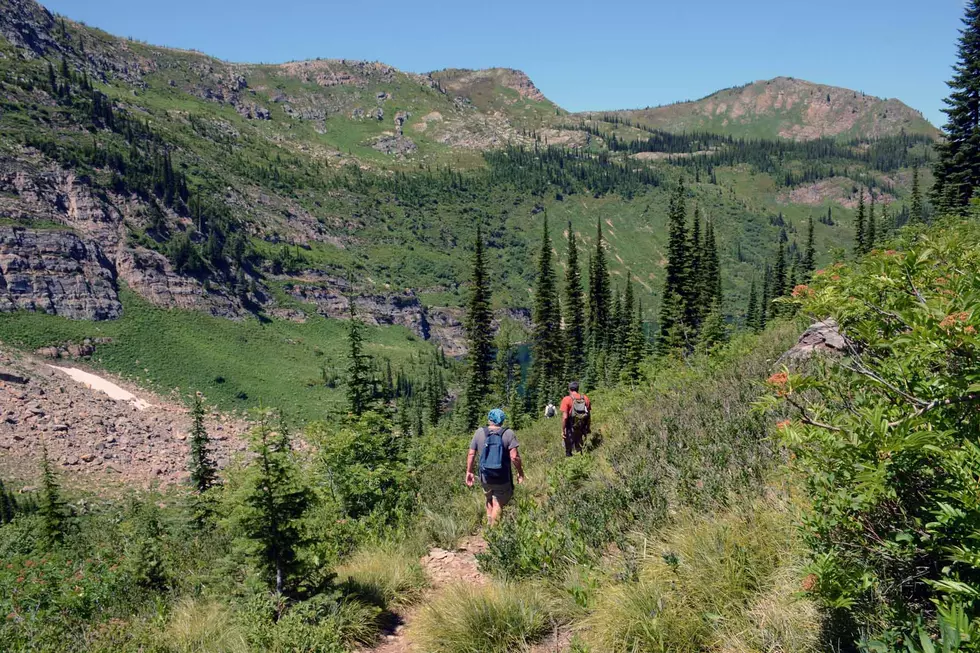
Viewpoint: Solving the wilderness problem – restoring alliances
Bill Schneider
Follow this link to read the first part of "Solving the wilderness problem."
I’m not sure Montana conservation leaders even realize what happened, but through the decades, the opposition has expertly employed the divide-and-conquer strategy on us.
Natural alliances that typically support efforts to protect wild land have been fractured. Now, allies of the past partake in bitter infighting that prevents us from building a large natural constituency that could sway political leaders.
Those who want to develop the last unprotected portions of Montana have not only convinced politicians to avoid wilderness like the plague but have also manipulated people who normally would support wilderness designation into opposing it. The best case-in-point is mountain bikers.
(For disclosure, I have been both an avid hiker and bicyclist for my entire life, including spending a lot of time riding my bicycle on trails.)
Mountain bikers are, in general, people who love the outdoors and support protecting wild areas. I have friends who are serious mountain bikers, and like me, they also like to hike wilderness trails.
Yet, led by the International Mountain Biking Association and magnified through many local bicycle clubs, mountain biking groups not only oppose wilderness designation but end up teaming with motorized recreation groups to create a powerful anti-wilderness lobby that has been proficient at stopping forward movement of many wilderness bills.
This all started back in the 1960s when the U.S. Forest Service (FS) decided to take an ultra-stringent interpretation of the Wilderness Act, signed by Lyndon Johnson in 1964. Even though modern mountain bikes weren’t on the market at that point in time, the FS decided that bicycling, a true form of muscle-powered recreation, would not be allowed in wilderness.
To translate, this rule is the opinion of federal agency personnel in Washington D.C. It was not voted on by Congress or the people affected by it, nor is the word, bicycle, anywhere in the Wilderness Act. The FS’s administrative rule has been debated and litigated for decades, and for all practical purpose is now the law of the land. This ship has sailed.
Worsening the situation is the sad reality that many hikers and hiking groups hate mountain bikers and have no interest in sharing trails with them. This gaping self-inflicted wound has also undermined wilderness designation efforts. Hikers and mountain bikers can and should share trails and work closely together to support protection of wild lands. Fortunately, this ship has not sailed.
The solution? For starters, we have to take a deep breath and accept that the other guys aren’t so bad. Hikers and mountain bikers need to accept peacefully sharing trails with each other. A little attitude adjustment, and presto, this ship sails back into port.
I could say the same about elk hunters, backcountry horsemen, guides and outfitters, and other constituencies with the same conclusion. If all naturally pro-wilderness groups banded together and presented a unified front, politicians would notice.
Enter the collaborators. Several Montana conservation groups have decided to kowtow to the demands of politicians and try to come up with the elusive “lay-up” legislation that could get a congressional vote. Led by Wild Montana (formerly the Montana Wilderness Association), representatives of various stakeholders, mainly advocates for mountain biking, motorized recreation and the timber industry have worked diligently to draft the imaginary non-controversial legislation.
(As an aside, the Montana Wilderness Association removing the word, “wilderness,” from its name seems like a giant “tell” as to the current mindset of our conservation leaders. Have they given up on it?)
Ironically, one vital stakeholder has been purposely excluded from the collaborative sessions. Montanans who feel strongly that we should protect all of our remaining roadless lands have not been invited to the table. Instead, we have been scorned by our colleagues as disruptive “purists,” a subject I covered in an earlier commentary.
By shunning the involvement of dedicated wilderness supporters, collaborators have worsened the problem by estranging a significant natural ally. When collaborative proposals started giving up large chunks of our last wild heritage in an attempt to satisfy demanding politicians and to win support from the timber industry and the mountain biking/motorized recreation combine, pro-wilderness Montanans started opposing these proposals.
Yes, we conservationists are good at self-inflicted wounds.
Look at it from a politician’s viewpoint. If pro-wilderness Montanans oppose their wilderness bill, why bother?
What to do? First, the fracture between collaborators and so-called “purists” must be sealed. Then, starting with a unified base of wilderness advocates, add several core constituencies that should support protection of roadless lands such as mountain bikers, elk hunters, fly anglers, paddlers, guides and outfitters, backcountry horsemen, and perhaps others.
Complement this already-substantial alliance with businesspeople who depend on Montana having a clean, healthful, beautiful environment, such as realtors, home builders, tourism-related businesses and many more.
When you do all that, what do you have? You have most Montanans and a massive coalition no politician can ignore.
In the last of this three-part commentary, I will recommend how this coalition can work together to solve the problem.
